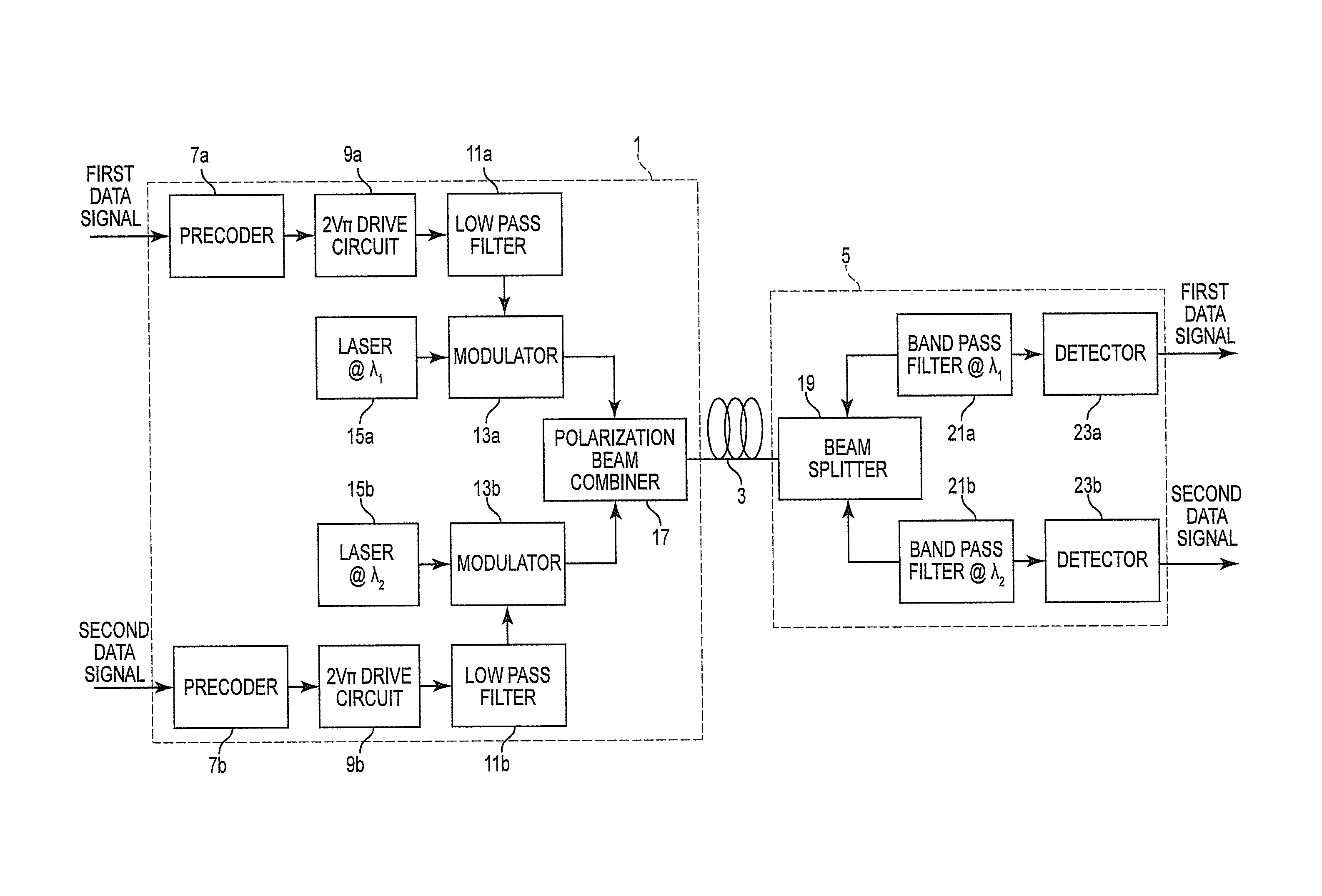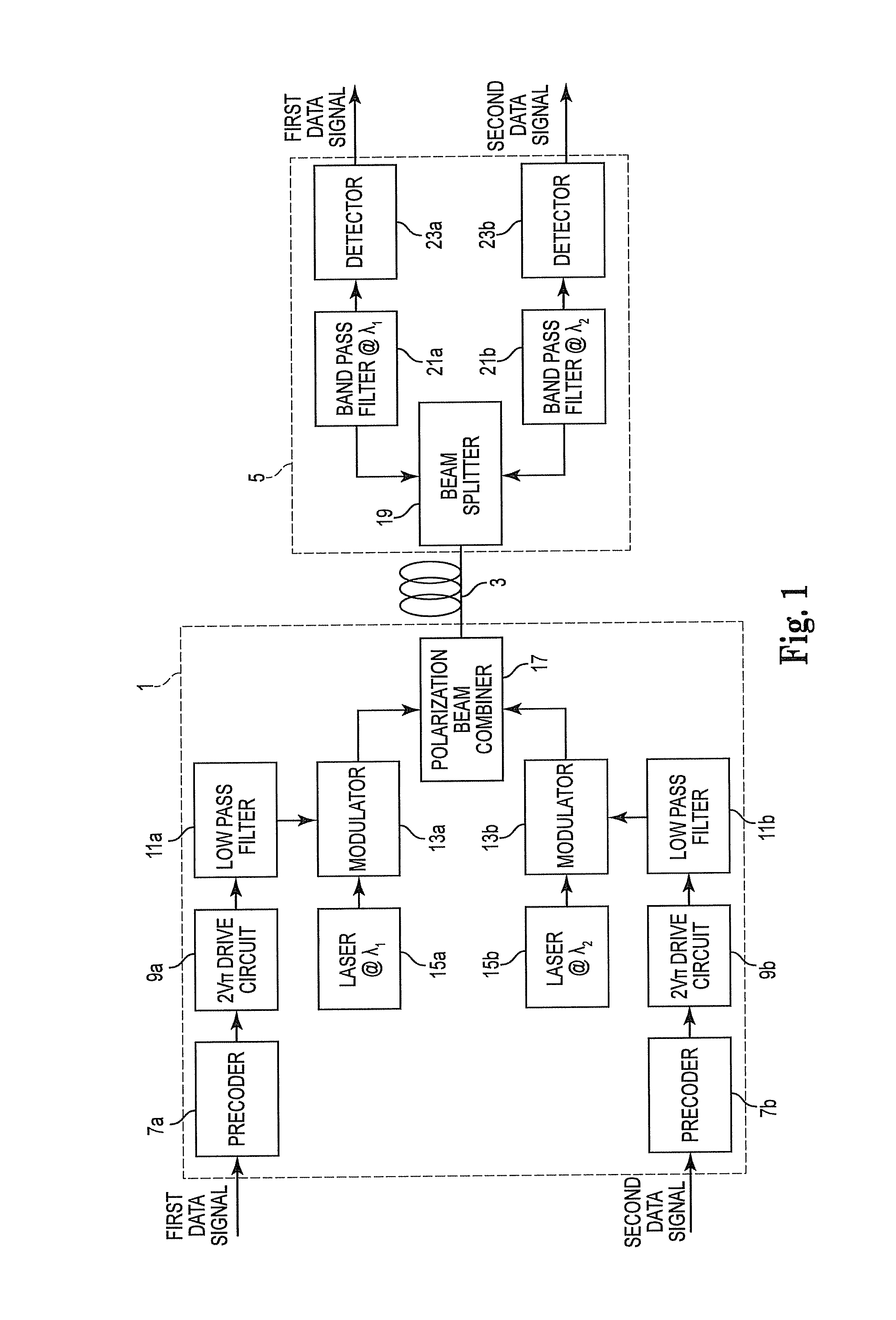Optical communication system, and transmitter and receiver apparatus therefor
a communication system and optical communication technology, applied in the field of optical communication systems, can solve the problems of complex receivers, increased frequency bandwidth, and increased frequency bandwidth, and achieve the effect of reducing the number of receivers
- Summary
- Abstract
- Description
- Claims
- Application Information
AI Technical Summary
Benefits of technology
Problems solved by technology
Method used
Image
Examples
Embodiment Construction
[0019]Details of the present invention will now be described, including exemplary aspects and embodiments thereof. Referring to the drawings and the following description, like reference numbers are used to identify like or functionally similar elements, and are intended to illustrate major features of exemplary embodiments in a highly simplified diagrammatic manner. Moreover, the drawings are not intended to depict every feature of actual embodiments nor the relative dimensions of the depicted elements, and are not drawn to scale.
[0020]As shown in FIG. 1, in an optical communication system according to the present invention a transmitter 1 transmits a modulated optical signal through an optical fiber 3 to a receiver 5. The optical signal is modulated in accordance with first and second data signals which are input to respective precoders 7a, 7b of the transmitter 1. In this embodiment, each data signal conveys data serially at a data rate of 22 Gigabits per second (Gbps). The pair ...
PUM
 Login to View More
Login to View More Abstract
Description
Claims
Application Information
 Login to View More
Login to View More - R&D
- Intellectual Property
- Life Sciences
- Materials
- Tech Scout
- Unparalleled Data Quality
- Higher Quality Content
- 60% Fewer Hallucinations
Browse by: Latest US Patents, China's latest patents, Technical Efficacy Thesaurus, Application Domain, Technology Topic, Popular Technical Reports.
© 2025 PatSnap. All rights reserved.Legal|Privacy policy|Modern Slavery Act Transparency Statement|Sitemap|About US| Contact US: help@patsnap.com



